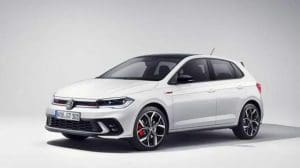Catalyst Converter 6N0131701AA / J28 / WWO GERMANY FROM VOLKSWAGEN
Catalyst Converter 6N0131701AA / J28WWO GERMANY is a catalyst used by Volkswagen. It is small in size – about 35 cm long, although it weighs 1235 kg. It has a symmetrical, round shape. It is distinguished by a perforated body. Occurs in the Volkswagen Polo model. A common case of 6N0131701AA / J28WWO GERMANY catalyst is housing decomposition. In such a situation, as you know, it is best to contact a specialized buying center. Only an expert can correctly identify this model and evaluate it accordingly.
 Volkswagen Polo is manufactured by the German car concern Volkswagen AG. This car entered the market back in 1975. Where did this name come from? According to the developers, sports and polo discipline became the inspiration. The first generation of the model was sometimes called Derby.
Volkswagen Polo is manufactured by the German car concern Volkswagen AG. This car entered the market back in 1975. Where did this name come from? According to the developers, sports and polo discipline became the inspiration. The first generation of the model was sometimes called Derby.
How did the story of this iconic city car begin? It turns out it dates back to 1971, when German engineers received information that it was necessary to create a car with a maximum length (up to 3.5 m) with a lightweight construction (up to 700 kg). The car was first introduced in 1974, but was released under the Audi brand as the Audi 50. About 180,000 50 specimens were produced at that time.
1975 it was presented at a car show in France. The Polo was slightly different from the Audi 50 (which was already discontinued in 1978) with fewer amenities and a lower price, more affordable at the time.
The first-generation Polo was equipped with a four-cylinder 0.9-liter engine and a low power of 40 horsepower. A year later, a 1.1-engine version with 50 hp was introduced.
The breakthrough came in 1979, when the car underwent several modifications related to the equipment and a sports version of the sport-friendly GT was launched. 
The second generation has been produced since 1981. It was then decided to extend production of the car, increase the engine’s displacement to 1.4 and release another sports version, the G40 (116 hp). The Polo underwent further modifications, which provided them with new headlights and bumpers. A radiator grille was also added. The third generation entered the market in 1994. Seata Ibiza floorboard was used in the production. The car was then fitted with two airbags, a sedan version was introduced, a sports version of the GTI (125 hp) and a modified instrument panel were released. In 1996, production of the model began at the Volkswagen plant in Poznan.


